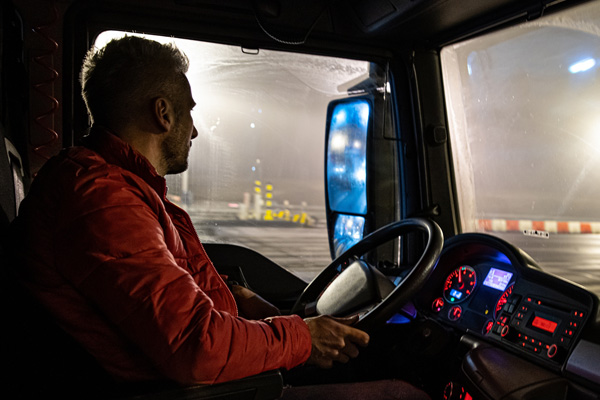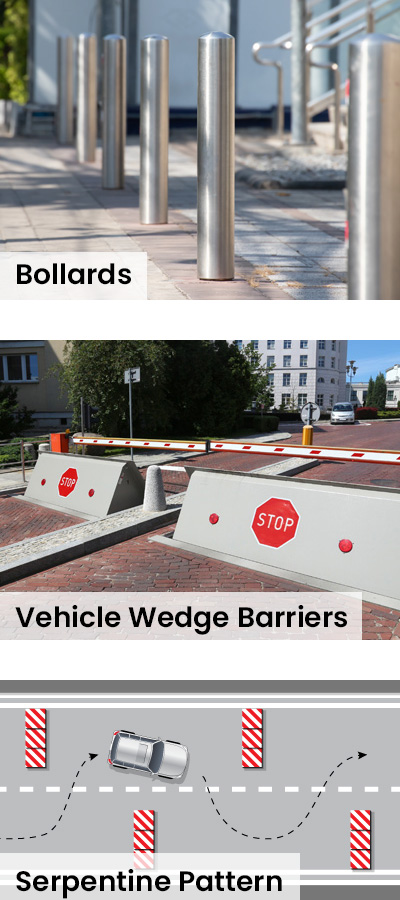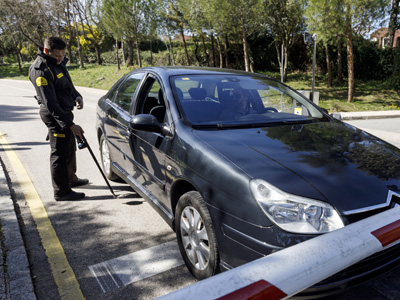Blog
Vehicular Ramming Attacks: How to Protect your People and Assets

By Robert Dodge
On a spring day in 2021, U.S. Capitol Police Officer Billy Evans was working a security checkpoint on Constitution Avenue when a blue Nissan Altima approached. Without warning, the car smashed into a barricade, striking Evans and another officer in the process. He and the driver both died in the incident.
This was a classic “lone wolf” attack that would have been difficult for security personnel to anticipate. But for a brief moment, it brought into clear focus the very real risk of vehicular ramming attacks—for government and private organizations. And it highlighted the importance of having detection and mitigation strategies in place to deal with such events.
A Not-So-Unlikely Scenario
For some security professionals, vehicular attacks might not seem like the most imminent threat. But vehicle attacks, on property as well as people, are actually very common. The use of a vehicle to run down people is not dissimilar from an active shooter scenario. Some perpetrators are motivated by ideology, some are deranged and others are motivated by simple greed. Terrorists and deranged individuals can mount an attack with minimal prior training and experience. Increasingly, thieves use cars to ram ATM machines or smash the display windows at retail stores. Their takings might be small, but the expense to the target organization is often large. And as we’ve all seen, some people use vehicles to express their rage at other human beings.
Meanwhile, certain terrorist groups have specifically encouraged their adherents to use vehicles to attack civilians - even providing detailed instructions on how to do so within social media and terrorist digital magazine publications. Since 2006, at least fifteen large-scale terrorist attacks have occurred. It’s reasonable to expect more to follow.
Vehicles as Weapons
The convenience and efficiency of using vehicles to mount attacks is obvious. Cars and trucks are everywhere in our world and easy to obtain. Anyone with the potential and the will to compromise your security can simply buy them, rent them, steal them or carjack them—and then aim them as weapons against structures or pedestrians. FBI statistics tell us that a vehicle is stolen every 46 seconds in the United States - 25% of those are trucks. Terrorists usually prefer trucks to carry out their attacks, since they are heavy load-bearing, have a reasonably fast rate of acceleration, have metal outer frames, are double wheeled, and have a slightly raised chassis. They can also inflict immense harm, as became clear on July 14, 2016, when a terrorist drove a 20-ton truck along the beachfront in Nice, France, killing 86 innocent people.
Look for the Warning Signs
Terrorists and deranged individuals often prepare their vehicles prior to an attack. They might beef up the suspension to accommodate heavy loads or in anticipation of a rough ride. A raised chassis enables them to mount curbs and other barriers. And dual rear wheels on a truck make it easier to run over victims. Being aware of features like these can help security professionals spot potential offenders.
Pre-attack indicators could involve:
- - Mapping out the route of the attack
- - Pre-attack location surveillance
- - Assessing vehicles for roadworthiness
Unusual behavior can also be a tip-off. When a person is seen standing, loitering, or parking at a location over long periods with no plausible explanation, it could be a sign of bad intentions. A perpetrator may not have experience driving the large vehicle he’s just rented or stolen, so erratic driving can be another red flag.
 The Next Step
The Next Step
Realizing that vehicular attacks pose a real risk in today’s world, the next task for security professionals is to develop and implement strategies to mitigate the harm of such events.
Passive measures, such as erecting physical barriers, can stop would-be threats, or slow them down enough to allow time for other preventive actions. A proper threat assessment involves planning countermeasures to address the size, weight, and speed of a potential vehicle conducting an attack.
While fixed barriers are often the most effective deterrents, operable barriers, have the advantage of being easily movable.
Bollards are among the most common and effective fixed barriers. They impede vehicle traffic while still allowing pedestrians to pass.
Vehicle wedge barriers can be installed at strategic locations on roadways and activated as needed to stop suspicious cars or trucks from passing.
The American Society for Testing and Materials (ASTM) assigns crash ratings to vehicle barriers to assess their effectiveness at stopping vehicles of various types and sizes. Knowing the crash ratings of available products can help an organization choose the ones that best suit its needs. Ratings range from a K4 up to a K12 level.
Barriers can be set up at various heights, lengths, and patterns for the optimal asset protection you are looking to achieve. One effective technique is to place them in a serpentine pattern, which forces vehicles to drive through them at a relatively slow speed. Remember that speed is the enemy - you don’t want the attacker's vehicle gaining speed that could increase damage.
How to Maximize the Tools You Already Have
It’s important to pair your physical tools with video surveillance. Using the above example, a serpentine barrier array allows security personnel time to observe visitors and assess potential risks before an event can take place.
The goal is to detect, classify and identify vehicle attacks as early as possible.
Many organizations have impressive security camera systems but don’t use them effectively. Asking a few basic questions can reveal critical weaknesses. For instance:
- - Who’s watching the cameras? Are they trained to spot potential problems?
- - How are you controlling the access points into the building?
- - Where are the cameras pointed? Establishing the right field of view is vital to identifying potential threats. Are your cameras integrated with your perimeter security and barrier security strategies?
- - Are the cameras monitored remotely? For companies that don’t prefer to do this in-house, an outside security firm offering 24/7 monitoring can be a viable solution.
As important as the human element is in identifying threats, state-of-the-art technology can enhance a security system enormously. For instance, no individual can effectively monitor multiple cameras at the same time. But video analytic software can. In many cases, this technology can identify threats faster and more accurately than a human.
 Anticipating Trouble - and Neutralizing It
Anticipating Trouble - and Neutralizing It
The physical measures mentioned here are only one part of an effective mitigation strategy. It’s important for security teams to visualize events that could happen and then design procedures with them in mind.
Part of any robust strategy is knowing how to work with law enforcement. In this regard, a few pointed questions are in order:
- - How will your team coordinate with law enforcement?
- - What will happen when first responders arrive on the scene?
- - If you’ve set up a formidable system of barriers, how will those first responders get in? Your effective security structure could become a hindrance at that critical moment.
- - For direct action procedures, review your existing security force training, tactics, and protocols. Remember that you will need to channel threat to interdiction zone because often the vehicle attack is just the beginning. The next step is likely a knife or gun attack by the driver once the vehicle is stopped.
It’s wise to think of these things beforehand, so when a crisis happens, you’ll have a seamless plan to implement.
The final essential component, of course, is training. Your employees should know what to do when an incident happens. Include a section on vehicle attacks in your workplace violence and active shooter training. The time spent educating them could save their lives.
There are many resources available to help you in formulating violence mitigation plans. The FBI addresses these issues, as does the Association of Threat Assessment Professionals and ASIS International. And of course, your friendly global risk experts at Prosegur are always ready to help in whatever way we can.
* * *
 Robert Dodge is the Chief Executive Officer, Global Risk Services at Prosegur USA.
Robert Dodge is the Chief Executive Officer, Global Risk Services at Prosegur USA.
Robert is a recognized global security expert with over 25 years of experience in security, investigations and consulting. He has worked on security and investigative projects in more than 90 countries around the world.
Robert currently serves as CEO of Prosegur Global Risk, a key business unit of the world’s third largest security company, where he leads the team that advises some of the largest organizations around the world on risk mitigation and security strategies. Prior to joining Prosegur, he was Global President of the Corporate Risk Services Division at G4S. He also spent 14 years with Pinkerton, one of the world’s largest risk management firms as the International Senior Vice President, responsible for managing all of Pinkerton’s international offices and operations. Early in his career Robert served honorably in the U.S. Navy.
Robert regularly speaks and writes on the matters of security and risk both domestically and internationally.